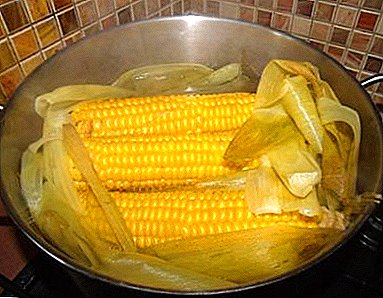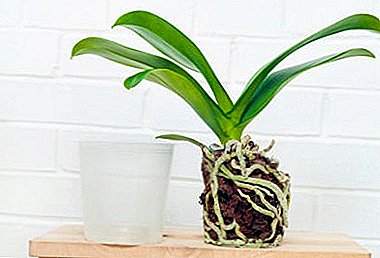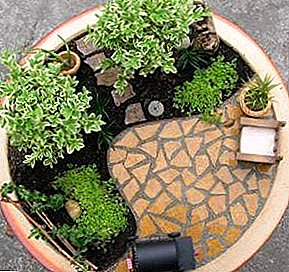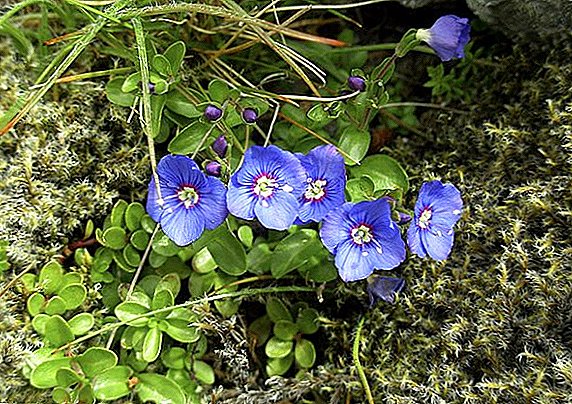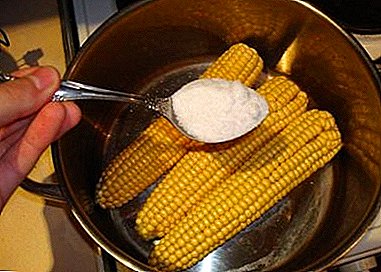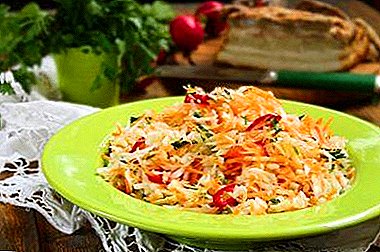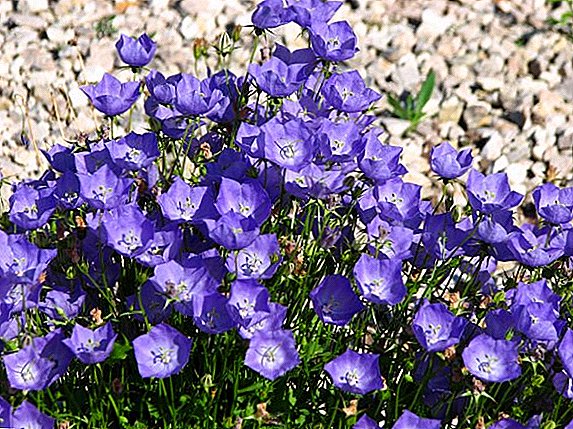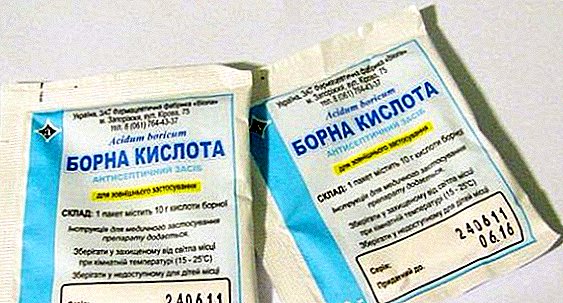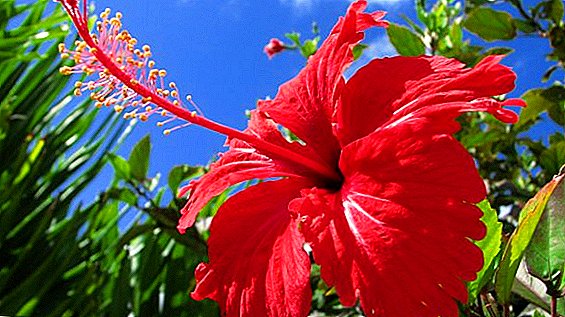 Hibiscus, or Chinese rose, is considered the most popular among the genus Hibiscus family Malvaceae. In total, there are about 200 species of hibiscus, but it is precisely the Chinese rose that has become popular in floriculture.
Hibiscus, or Chinese rose, is considered the most popular among the genus Hibiscus family Malvaceae. In total, there are about 200 species of hibiscus, but it is precisely the Chinese rose that has become popular in floriculture.
Did you know? In Malaysia, the Chinese rose (Malays call it Bungaraya) is one of the symbols of the country, which is depicted on coins.
This perennial Chinese rose grows in apartments and offices and grows in height to the ceiling. Blooming can be of different colors, but the flowers are always large or terry.
In this article we will look at how to plant a Chinese rose and what is the proper care for it at home. Also learn how to propagate hibiscus and learn about the beneficial properties of this plant. Find out what the pests and diseases of the Chinese rose are and how to deal with them.
Optimal conditions for growing Chinese rose at home
 Growing Chinese roses at home is an easy process that does not take much of your time. With proper care, hibiscus will delight you with lush buds throughout the year.
Growing Chinese roses at home is an easy process that does not take much of your time. With proper care, hibiscus will delight you with lush buds throughout the year.
In this section we will talk about proper care and landing Chinese rose at home.
Soil and planting capacity
Chinese rose grows well in moist drained soil with a high percentage of organic materials. The soil should not be dry, as there is a high probability of rotting of the roots. Land should be loosened periodically, it will help avoid drying out of the roots from the heat.
For planting hibiscus fit bright ceramic pots or wooden tubs. Dark color pots will not work, as the roots will overheat and rot.
Lighting and temperature
 For the well-being of the Chinese rose is the only condition, and it is good lighting. Buds are formed under the influence of sunlight, so good lighting will help the plant to bloom profusely and for a long time.
For the well-being of the Chinese rose is the only condition, and it is good lighting. Buds are formed under the influence of sunlight, so good lighting will help the plant to bloom profusely and for a long time.
The best temperature for this plant is 26 ° C. In winter, it is better to lower it to 18 degrees, since the successful formation of the kidneys occurs at low air temperatures. If the hibiscus is grown at high temperatures in the winter, it will not affect it in any way, the only thing is that the flowering will not be so rich.
In the summer, take out hibiscus on the balcony, loggia or terrace.
Important! Do not allow direct rays on the Chinese rose in the summer.
Basic rules for the care of the Chinese rose
In this section we will talk about correct watering and top dressing Chinese roses, as well as pruning and transplanting hibiscus.
Watering, spraying and dressing
Do not forget about how to water hibiscus so that it feels good.
Chinese rose requires high humidity, so you should spray it with water in summer and winter. You can also use a proven method - a pallet with wet pebbles, but the pot should be set so that the bottom does not touch the water. Sometimes you can water the plant in a warm shower. This will help not only to feed on moisture to the leaves, but also get rid of the spider mite.
Important! Do not allow drops on the flowers and buds.
 It is often necessary to fertilize and moisten the soil in the pot. Watering is worth the defended water at room temperature. The frequency depends on the drying of the top layer of soil 3 cm deep.
It is often necessary to fertilize and moisten the soil in the pot. Watering is worth the defended water at room temperature. The frequency depends on the drying of the top layer of soil 3 cm deep.
Many amateur gardeners often ask questions in the forums about how to fertilize a room hibiscus. Fertilizing the Chinese rose is needed from April to September, once every two weeks with fertilizer for flowering plants. Also mineral fertilizer should be changed to organic and vice versa. In winter, use potassium phosphate fertilizer in a quarter of the indicated dose, but only when hibiscus blooms.
Trimming and transplanting
We turn to pruning and the formation of the bush of Chinese roses.
Removal should be carried out in the spring before hibiscus transplantation and before the formation of buds on it. This is done in order to increase the number of shoots and the formation of lush crowns bush. It is necessary to remove dried and bare shoots completely. Healthy can be cut in half. Place cuts processed garden pitch. This is necessary so that juice does not flow out of the wounds. Cut parts of healthy shoots are used as cuttings. On the bush should remain healthy and strong branches.
In the summer you need to repeat pruning. Flower buds will appear only at the beginning of autumn, and until spring the hibiscus will delight you with beautiful flowers.
Hibiscus transplants take place every spring or autumn, and combine this with pruning. Adult plants need to replant no more than once every 3 years.
To do this, prepare the following mixture: mix leaf soil (one part), turf (one part), compost (two parts) and sand (one part). You can also add bone meal. It is necessary for the plant to enrich with calcium and phosphorus.
 The best pots for transplanting Chinese roses are ceramic pots or wooden tubs. Purchased pots soaked for several hours in boiling water before planting. If you use pots that have already been used, wash them with running water without using detergents.
The best pots for transplanting Chinese roses are ceramic pots or wooden tubs. Purchased pots soaked for several hours in boiling water before planting. If you use pots that have already been used, wash them with running water without using detergents.
Before planting, provide the plant with growth stimulants and high-quality drainage. For this may be suitable expanded clay, which is placed on the bottom.
If you just transplanted hibiscus, put it in a shaded place and after a day return the plant to its usual place.
Hibiscus can reach large sizes and transplanting will be impossible; in this case, the surface layer of the earth should be replaced with a nutrient primer.
Hibiscus reproduction
In this section we will figure out how to propagate hibiscus cuttings or seeds.
Cuttings
For rooting, use hibiscus cuttings that remained after spring pruning. Process slices with a growth stimulator and place them for growing the root system into water. Or you can use a mixture of sand and peat, after which the plant is covered on top of a glass jar. Rooting occurs within three weeks. After this, plant the stalk in the ground for the Chinese rose and pinch.
With good lighting, these spring cuttings bloom in a couple of months.
Seeds
 Sow the seeds of hibiscus from January to March. Before this, the seeds are kept in a solution of epine for 12 hours. Fertilizer consists of a mixture of sand and peat.
Sow the seeds of hibiscus from January to March. Before this, the seeds are kept in a solution of epine for 12 hours. Fertilizer consists of a mixture of sand and peat.
Cover the seed pot with a piece of glass. The temperature during germination should be 25 ° C.
Spray and air spikes regularly.
With the appearance of the first three leaves, young hibiscus spikes and sits in separate pots.
After transplantation, flowering will occur in three years.
Medicinal use of hibiscus
Hibiscus has various organic acids, such as anthocyanins, phytosterols, pectins and hibiscic acid. Therefore, the branches of the plant have a slightly sour taste. Drink from it perfectly quenches thirst. It also has a mild laxative effect.
Hibiscus has anti-inflammatory and hemostatic properties and is indispensable in the treatment of weeping ulcers.
Hibiscus perfectly restores metabolism due to the fact that contains a large number of flavonoids.
Did you know? If you want to lose weight, add to your diet sweets that contain jasmine and hibiscus decoctions. This will help you to lose a few extra pounds without effort, and you can indulge yourself with sweets.
Leaves and flowers increase the production of bile and improve metabolism.
 Fragrant Hibiscus Teas have a choleretic and hemostatic effect on the human body. If the leaves are crushed to a homogeneous mass, it can help in the treatment of malignant tumors of all kinds.
Fragrant Hibiscus Teas have a choleretic and hemostatic effect on the human body. If the leaves are crushed to a homogeneous mass, it can help in the treatment of malignant tumors of all kinds.
Tea normalizes the nervous system, blood pressure and cleans the kidneys from toxins and salts.
Also, hibiscus is used for infertility of men and women.
Important! Hibiscus tea should not be consumed during pregnancy. It increases the risk of various complications and stimulates menstruation.
Diseases and pests of the Chinese rose, the fight against them
Hibiscus, like all plants, is attacked by various pests. The danger is thrips and aphids. This happens because of improper care of the plant. And most often the cause of this problem is too dry air. To do this, put the plant on a tray with wet pebbles and spray leaves with water.
To destroy the parasites, you can treat the plant with bitter pepper extract and soap. If the infection is too severe, apply the treatment with Actellic solution, diluting 15 drops of the drug per liter of water.
Thrips
 High temperatures and dry air are a suitable climate for thrips. If you have noticed that pollen began to crumble in blooming buds, this is the first sign that the plant is infected with these parasites.
High temperatures and dry air are a suitable climate for thrips. If you have noticed that pollen began to crumble in blooming buds, this is the first sign that the plant is infected with these parasites.
You can also check it out - shake the pot over the dark paper. Pests immediately show up.
On the leaves, there are also lesions, a grayish tint appears. Foliage dries out and curls. From the side it looks like it is on the colors of burns and dirt.
The method of struggle. You should inspect all plants and isolate the flower that is most infected. Parasitic larvae are removed with cotton buds. After that, the plant should be transplanted.
You can also get rid of pests and soap solution. They rubbed leaves, stalks and pot.
Important! Wash the plant before processing.
Aphid

The first signs of damage by these parasites are as follows:
- The leaves stick together and turn yellow, and the flowers do not bloom and fall.
- The plant is covered with sugary liquid lumps.
- Ants appear.
Diseases
Hibiscus may turn yellow due to too wet soil for a long time. In this case, you should reduce the watering time and spray the leaves. If the plant is completely yellow, transplant the hibiscus to a new place, inspect the roots and remove the rotted roots.
Also the reason for the yellowing of the leaves may be in the wrong light. In this case, almost all the leaves fall.
Foliage falls down and with strong temperature or drafts.
If you change the place of the pot, the leaves can dry. It should give time to the plant, so that it stuck in a new place.
 When the leaves wither, it is a sign of poor watering. It is best to check the roots. To do this, carefully remove the soil and soak for half an hour in a weak solution of potassium permanganate. Then transplant the plant in a pot with a light primer.
When the leaves wither, it is a sign of poor watering. It is best to check the roots. To do this, carefully remove the soil and soak for half an hour in a weak solution of potassium permanganate. Then transplant the plant in a pot with a light primer.
Many are wondering how to make hibiscus bloom, and this is the answer - you need to properly care for him at home and maintain the necessary plant watering and lighting. It also happens that the plant has too little light, or in the winter time the hibiscus is in a too warm room.
In this article, we have analyzed in detail what hibiscus is, as right plant a Chinese rose and care for her.
We also reviewed the breeding methods and useful properties of hibiscus. They learned how to identify parasites and diseases and how to deal with them.


